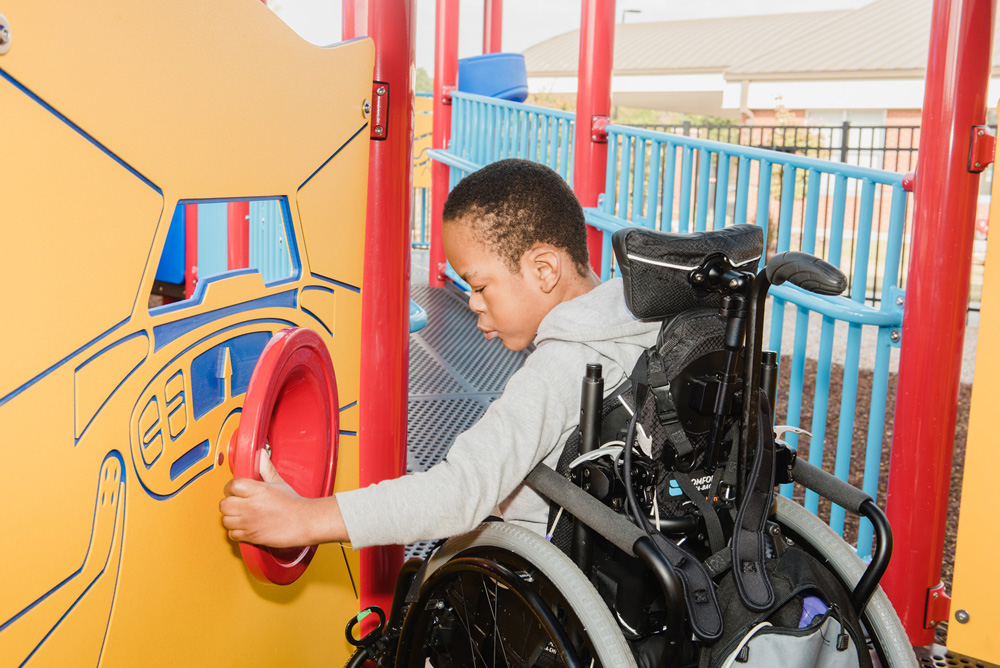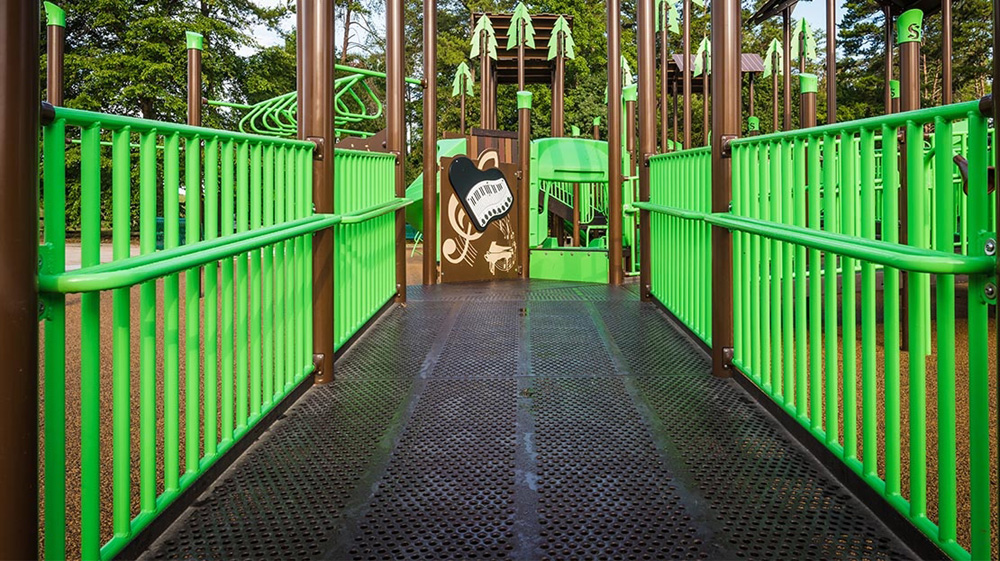“A person’s a person, no matter how small.”
Dr. Seuss, Horton Hears a Who!
Inclusive Play is the joyful art of everyone getting to play—together. It’s when playgrounds, games, and activities are designed so that kids of all abilities, backgrounds, and experiences can join in the fun, side by side. And in the best playgrounds, laughter has no limits and every child belongs.
At the heart of inclusive play are two essential concepts: physical accessibility and social inclusion. Together, they create spaces where all children can thrive—side by side.
Physical Accessibility – All Paths Lead to Play
Sparked by the momentum of the Americans with Disabilities Act (ADA) in 1990, the movement gained traction with a growing understanding that all children benefit from playing and learning together. Inclusive playgrounds began incorporating ramps, sensory elements, and equipment usable by kids with diverse mobility, sensory, and cognitive needs. These features ensure every child can navigate and participate.
Awesome, Kid-Approved Play Structures:
- Smooth, wide ramps that connect different play levels
- Ground-level play panels with tactile elements for exploration
- Transfer platforms for easy access to slides or climbers
- Rubberized surfacing instead of mulch or gravel for safe movement
- Adaptive swings and seats with secure harnesses for all body types.

Social Inclusion: More Than Just Access, It’s Belonging:
The Civil Rights Movement and other social justice milestones sparked a wave of change that paved the way for today’s vibrant celebration of inclusion—where diversity shines bright, and everyone’s invited – equal participation!
The best playgrounds today are intentionally designed to encourage inclusion, creating bonds of connection, respect, understanding and community. Social inclusion is like a friendship supercharger—it powers up empathy, turbo-boosts communication, and builds a team spirit that lasts way beyond the playground!
Turn Playtime into Together Time:
- Musical instruments like outdoor drums and xylophones—great for collaborative, sensory-rich play
- Imaginative play zones (like pretend markets, playhouses and stages) that invite cooperative storytelling
- Group spinners and seesaws that require teamwork and build friendships
- Panels with visual, tactile, and auditory stimuli for children to create and problem-solve together
Research shows that kids who play in inclusive playgrounds boost their social skills, empathy, and problem-solving—and grow up to be confident, adaptable adults ready to shine in any community!

